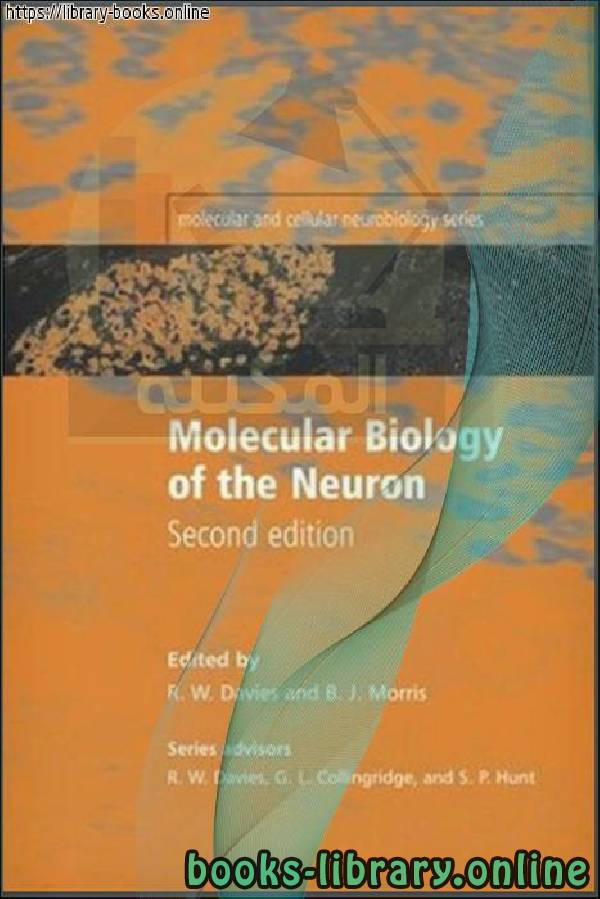كتاب Protein Arrays Methods and Protocols
نبذه عن الكتاب: Protein Arrays From cDNA Expression Libraries Hendrik Weiner, Thomas Faupel, and Konrad Büssow Summary This chapter describes the production of a cDNA expression library from human fetal brain, the construction of a high-density protein array from such a library, and two applications to screen the array for binding proteins. After producing the library and decollating the expression clones, one can pick thousands of expression clones with a laboratory robot and can deposit them into microtiter plates in an ordered manner. Such ordered clone libraries are the starting material for the construction of a high-density protein array. This array is constructed by spotting the expression clones onto a protein-binding membrane. Following cell growth and induction of protein expression on the membrane, the cell spots are lysed and their recombinant protein immobilized on the membrane. The so-constructed array carries thousands of proteins without the need to clone, express, and spot individual proteins. Such arrays allow one to screen for numerous protein functions in a high-throughput manner. Key Words: Protein array; cDNA expression library; high-density spotting; clone array; protein antigen; protein function; protein–protein interaction; posttranslational modification; high-throughput screening. 1. Introduction Arrays of complementary DNA (cDNA) expression libraries carry thousands of proteins without the need to clone, express, and spot individual proteins (1). These arrays are practical formats to screen en masse for a given protein function, that is, to identify protein antigens (1,2), including autoantigens (3), binding proteins (4), and substrates for arginine methyltransferases (5). Although not yet demonstrated, the arrays may also permit studies on posttranslational modifications other than protein methylation, that is, to find substrates for certain protein kinases. The protein arrays described here are made using cDNA libraries that are constructed in expression vectors. With the help of a laboratory robot, one can pick thousands of library clones and can deposit them into microtiter plates in an orderedEric T. Fung, MD, PhD - ❰ له مجموعة من الإنجازات والمؤلفات أبرزها ❞ Protein Arrays Methods and Protocols ❝ ❱
من Biology Books علم الأحياء - مكتبة الكتب العلمية.

قراءة كتاب Protein Arrays Methods and Protocols أونلاين
معلومات عن كتاب Protein Arrays Methods and Protocols:
Protein Arrays From cDNA Expression Libraries
Hendrik Weiner, Thomas Faupel, and Konrad Büssow
Summary
This chapter describes the production of a cDNA expression library from human fetal brain,
the construction of a high-density protein array from such a library, and two applications to
screen the array for binding proteins. After producing the library and decollating the expression
clones, one can pick thousands of expression clones with a laboratory robot and can deposit
them into microtiter plates in an ordered manner. Such ordered clone libraries are the starting
material for the construction of a high-density protein array. This array is constructed by spotting the expression clones onto a protein-binding membrane. Following cell growth and induction of protein expression on the membrane, the cell spots are lysed and their recombinant
protein immobilized on the membrane. The so-constructed array carries thousands of proteins
without the need to clone, express, and spot individual proteins. Such arrays allow one to screen
for numerous protein functions in a high-throughput manner.
Key Words:
Protein array; cDNA expression library; high-density spotting; clone array; protein antigen;
protein function; protein–protein interaction; posttranslational modification; high-throughput
screening.
1. Introduction
Arrays of complementary DNA (cDNA) expression libraries carry thousands of
proteins without the need to clone, express, and spot individual proteins (1). These
arrays are practical formats to screen en masse for a given protein function, that is, to
identify protein antigens (1,2), including autoantigens (3), binding proteins (4), and
substrates for arginine methyltransferases (5). Although not yet demonstrated, the
arrays may also permit studies on posttranslational modifications other than protein
methylation, that is, to find substrates for certain protein kinases.
The protein arrays described here are made using cDNA libraries that are constructed in expression vectors. With the help of a laboratory robot, one can pick thousands of library clones and can deposit them into microtiter plates in an ordered
سنة النشر : 2004م / 1425هـ .
عدد مرات التحميل : 3777 مرّة / مرات.
تم اضافته في : الثلاثاء , 28 يناير 2020م.
حجم الكتاب عند التحميل : 4.644 .
تعليقات ومناقشات حول الكتاب:
Biologically
Biology is a natural science that is concerned with the study of life, its various forms and its function, how these organisms interact with each other and with the surrounding environment. The word biology in Greek is made up of two words: bio (βίος) meaning life. And loggia (-λογία) means science or study. Biology: the similarity of vegetation and animal cover on the edges of the African and American states, and the existence of the same fossil.
Branches of biology
Biology is an ancient science thousands of years old and modern biology began in the nineteenth century. This science has multiple branches. Among them are:
Anatomy
Botany
Biochemia
Biogeography
Biofisia
Cytology or cell science
Ecology or environmental science
نبذه عن الكتاب:
Protein Arrays From cDNA Expression Libraries
Hendrik Weiner, Thomas Faupel, and Konrad Büssow
Summary
This chapter describes the production of a cDNA expression library from human fetal brain,
the construction of a high-density protein array from such a library, and two applications to
screen the array for binding proteins. After producing the library and decollating the expression
clones, one can pick thousands of expression clones with a laboratory robot and can deposit
them into microtiter plates in an ordered manner. Such ordered clone libraries are the starting
material for the construction of a high-density protein array. This array is constructed by spotting the expression clones onto a protein-binding membrane. Following cell growth and induction of protein expression on the membrane, the cell spots are lysed and their recombinant
protein immobilized on the membrane. The so-constructed array carries thousands of proteins
without the need to clone, express, and spot individual proteins. Such arrays allow one to screen
for numerous protein functions in a high-throughput manner.
Key Words:
Protein array; cDNA expression library; high-density spotting; clone array; protein antigen;
protein function; protein–protein interaction; posttranslational modification; high-throughput
screening.
1. Introduction
Arrays of complementary DNA (cDNA) expression libraries carry thousands of
proteins without the need to clone, express, and spot individual proteins (1). These
arrays are practical formats to screen en masse for a given protein function, that is, to
identify protein antigens (1,2), including autoantigens (3), binding proteins (4), and
substrates for arginine methyltransferases (5). Although not yet demonstrated, the
arrays may also permit studies on posttranslational modifications other than protein
methylation, that is, to find substrates for certain protein kinases.
The protein arrays described here are made using cDNA libraries that are constructed in expression vectors. With the help of a laboratory robot, one can pick thousands of library clones and can deposit them into microtiter plates in an ordered
Biology
Human biology
Who is the founder of biology?
The importance of biology
Areas of work in the field of biology
Theories of biology
Research on biology for the first grade of secondary school
Human biology
 مهلاً !
مهلاً !قبل تحميل الكتاب .. يجب ان يتوفر لديكم برنامج تشغيل وقراءة ملفات pdf
يمكن تحميلة من هنا 'تحميل البرنامج'

نوع الكتاب : pdf.
اذا اعجبك الكتاب فضلاً اضغط على أعجبني و يمكنك تحميله من هنا:


كتب اخرى في Biology Books

اختبارات الدفع والسحب لتوصيف الموقع PDF
قراءة و تحميل كتاب اختبارات الدفع والسحب لتوصيف الموقع PDF مجانا

Fundamentals of Physical Geography PDF
قراءة و تحميل كتاب Fundamentals of Physical Geography PDF مجانا

Molecular and cellular neurobiology series Morris PDF
قراءة و تحميل كتاب Molecular and cellular neurobiology series Morris PDF مجانا

Mineral and Thermal Waters of Southeastern Europe PDF
قراءة و تحميل كتاب Mineral and Thermal Waters of Southeastern Europe PDF مجانا





